The road to Corstorphine Castle was lined by an avenue of sycamore trees. One of the trees survived, until it was blown down in the winter storms of 1998. In its heyday, the well-known sycamore tree was more than 55 feet high and over 12 feet round. In August 1679, James, Lord Forrester was murdered at the tree, by his mistress, Christian Nimmo. Her ghost, known as ‘The White Lady’, is said to haunt the spot where she killed her lover with his own sword.
An illustration and text about James Thomson.
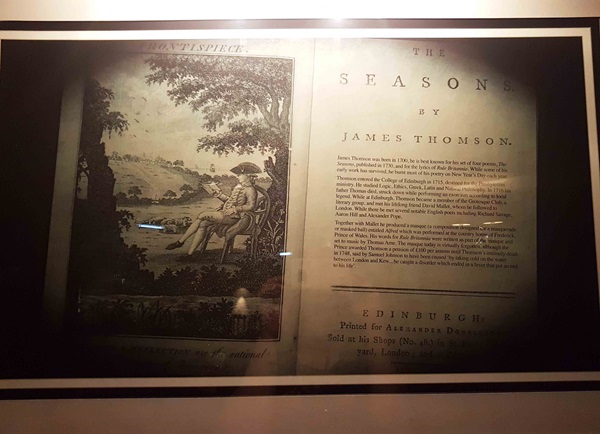
The text reads: James Thomson was born in 1700, he is best known for his set of four poems, The Seasons, published in 1730, and for the lyrics of Rule Britannia. While some of his early work has survived, he burnt most of his poetry on New Year’s Day each year.
Thomson entered the College of Edinburgh in 1715, destined for the Presbyterian ministry. He studied logic, ethics, Greek, Latin and natural philosophy. In 1716 his father Thomas died, struck down while performing an exorcism according to local legend. While at Edinburgh, Thomson became a member of the Grotesques Club, a literary group, and met his lifelong friend David Mallet, whom he followed to London. While there he met several notable English poets including Richard Savage, Aaron Hill and Alexander Pope.
Together with Mallet he produced a masque (a composition designed for a masquerade or masked ball) entitled Alfred which was performed at the country home of Frederick, Prince of Wales. His words for Rule Britannia were written as part of the masque and set to music by Thomas Arne. The masque today is virtually forgotten, although the Prince awarded Thomas a pension of £100 per annum until Thomson’s untimely death in 1748 said by Samuel Johnson to have been caused “by taking cold on the water between London and Kew… he caught a disorder which ended in a fever that put an end to his life”.
An illustration and text about Robert Louis Stevenson.
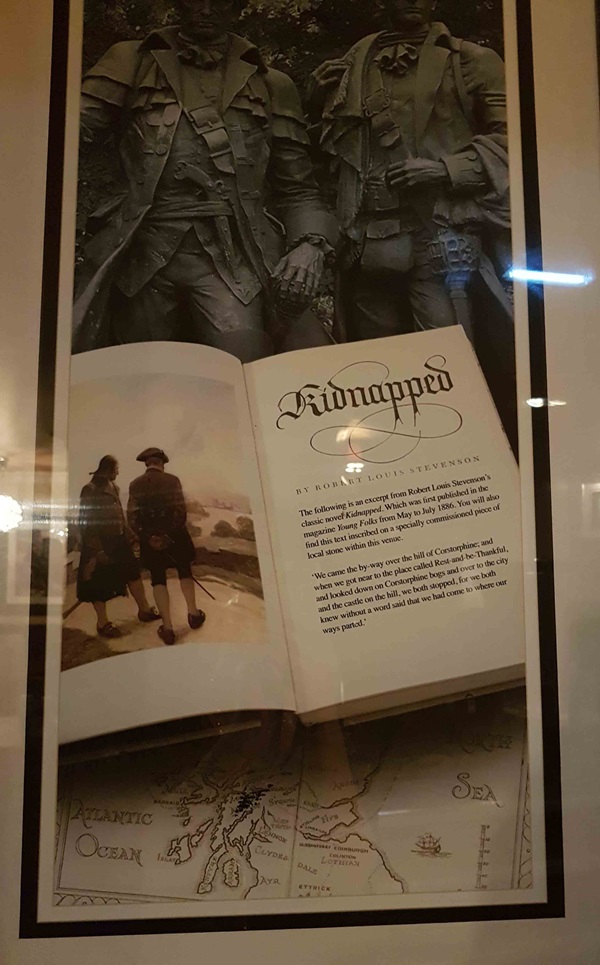
The text reads: The following is an excerpt from Robert Louis Stevenson’s classic novel Kidnapped. Which was first published in the magazine Young Folks from May to July 1886. You will also find this text inscribed on a specially commissioned piece of local stone within this venue.
“We came the by-way over the hill of Corstorphine; and when we got near to the place called Rest-and-be-Thankful, and looked down on Corstorphine bogs and over to the city and the castle on the hill, we both stopped, for we both knew without a word said that we had come to where our ways parted”.
A photograph and text about Clermiston Tower.
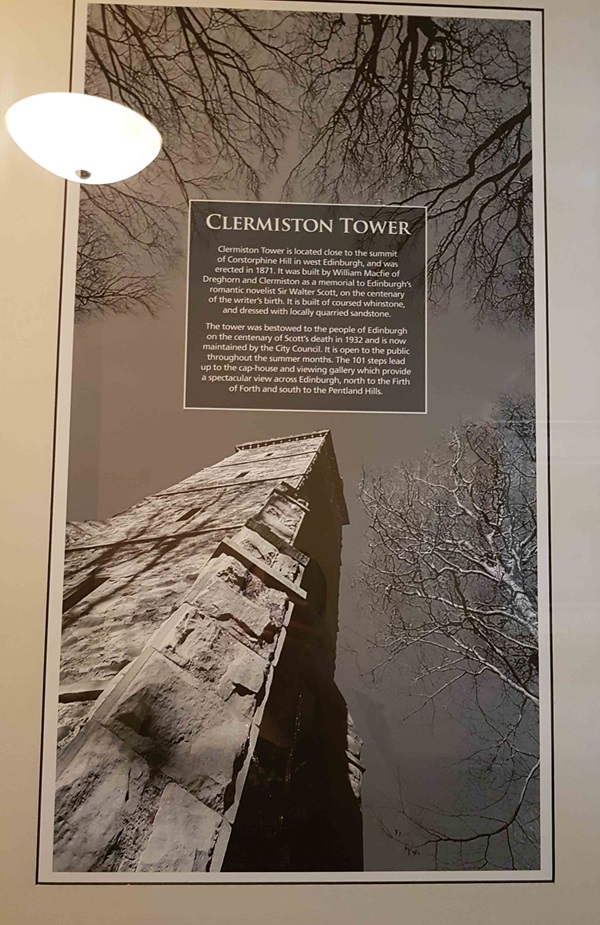
The text reads: Clermiston Tower is located close to the summit of Corstorphine Hill in west Edinburgh, and was erected in 1871. It was built by William Macfie of Dreghorn and Clermiston as a memorial to Edinburgh’s romantic novelist Sir Walter Scott, on the centenary of the writer’s birth. It is built of coursed whinstone, and dressed with locally quarried sandstone.
The tower was bestowed to the people of Edinburgh on the centenary of Scott’s death in 1932 and is now maintained by the City Council. It is open to the public throughout the summer months. The 101 steps lead up to the cap-house and viewing gallery which provide a spectacular view across Edinburgh, north to the Firth of Forth and south to the Pentland Hills.
A photograph and text about Cramond Causeway.
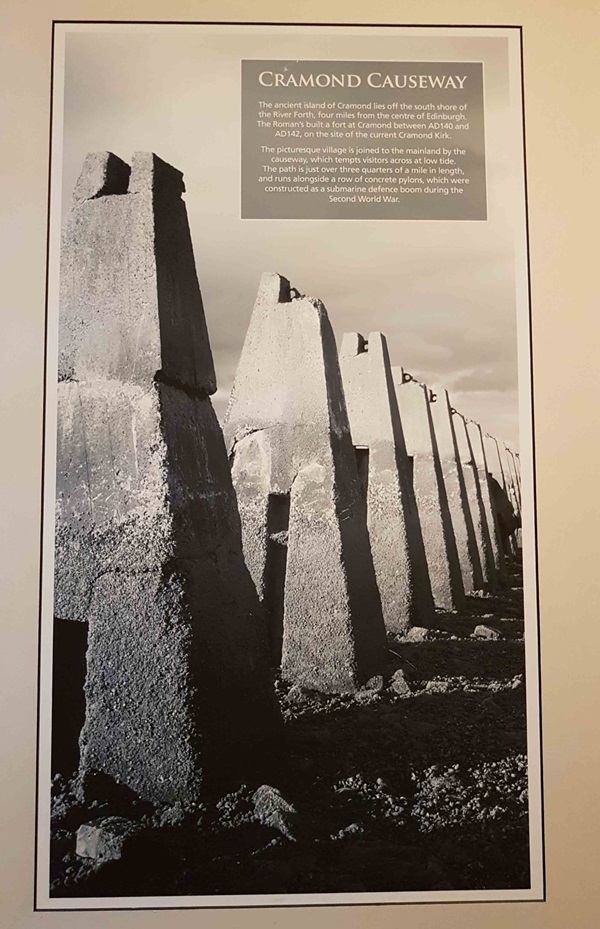
The text reads: The ancient island of Cramond lies off the south shore of the River Forth, four miles from the centre of Edinburgh. The Romans built a fort at Cramond between AD140 and AD142, on the site of the current Cramond Kirk.
The picturesque village is joined to the mainland by the causeway, which tempts visitors across at low tide. The path is just over three quarters of a mile in length, and runs alongside a row of concrete pylons, which were constructed as a submarine defence boom during the Second World War.
A photograph and text about the Corstorphine doocot.
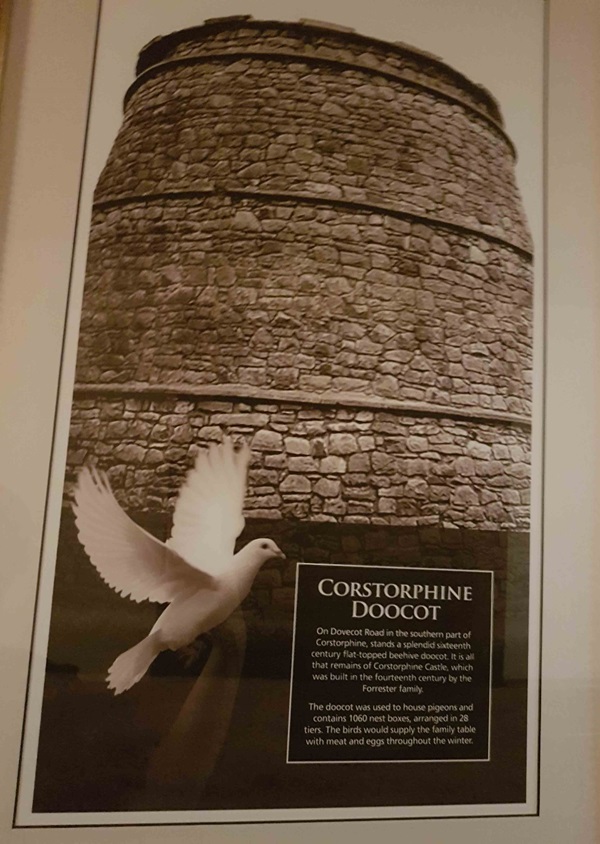
The text reads: On Dovecot Road in the southern part of Corstorphine, stands a splendid sixteenth century flat-topped beehive doocot. It is all that remains of Corstorphine Castle, which was built in the fourteenth century by the Forrester family.
The doocot was used to house pigeons and contains 1060 nest boxes, arranged in 28 tiers. The birds would supply the family table with meat and eggs throughout the winter.
A photograph of Linlithgow High Street, 1890s.
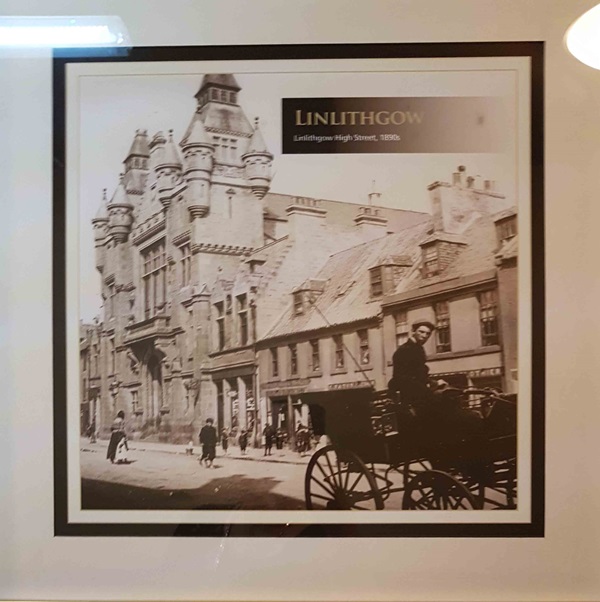
A photograph and text about Dugald Stewart Monument.
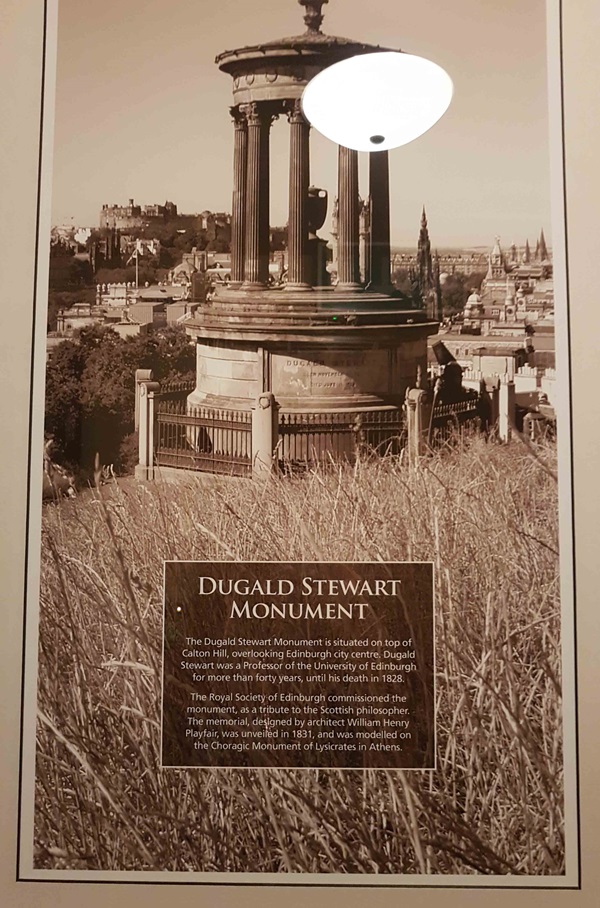
The text reads: The Dugald Stewart Monument is situated on top of Calton Hill, overlooking Edinburgh city centre. Dugald Stewart was a professor of the University of Edinburgh for more than forty years, until his death in 1828.
The Royal Society of Edinburgh commissioned the monument, as a tribute to the Scottish philosopher. The memorial, designed by architect William Henry Playfair, was unveiled in 1831, and was modelled on the Choragic Monument of Lysicrates in Athens.
External photograph of the building – main entrance.
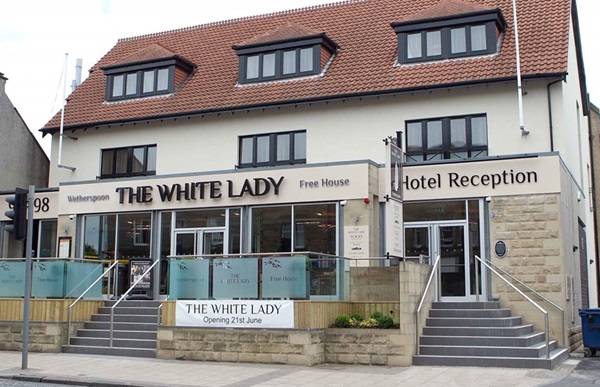
If you have information on the history of this pub, then we’d like you to share it with us. Please e-mail all information to: pubhistories@jdwetherspoon.co.uk